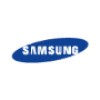
The Effects of Acupuncture and the Therapist´s Communication on Chemotherapy Induced Nausea and...
Breast CancerColorectal Cancer4 moreBackground: Nausea and vomiting (emesis) is a common and burdensome side-effect of emetogenic chemotherapy. Emesis affects both the patient's quality of life and induces high costs within the health-care system. Many patients are interested in acupuncture, despite weak scrientific evidence for its effects beside non-specific effects. Few credibly sham-controlled studies have previously been conducted. The therapist's care and communication during acupuncture as well as during standard care may induce non-specific effects, such as placebo effects, potentially driven by the patient's expectations. It is not known if the type of communication, in terms of how positive the therapist communicates regarding expected effects, affects the effect of antiemetic treatments. Aims: To investigate if chemotherapy-induced emesis, treatment expectancy and quality of life differ between patients who receive A) standard care including antiemetics, B) standard care plus sham acupuncture or C) standard treatment plus genuine acupuncture by a therapist who emphasizes the positive expected outcomes of the treatment, compared to a therapist who communicates neutral regarding the expected outcomes. Procedure: The eligible patients will be randomized to A) standard care, including antiemetics or to B) standard treatment plus sham acupuncture or C) standard treatment plus genuine acupuncture. Within the three groups, the patients are randomized to receive either neutral or positive communication with the therapist during the treatment. Outcome measures: The primary outcome is intensity of nausea within the five days after the chemotherapy session in patients receiving positive or neutral communication. Data collection of nausea and vomiting, expectations, and quality of life is performed at baseline the day before the studied chemotherapy session, during 10 days after the studied chemotherapy session, and at a follow-up ten days after the last chemotherapy session.

Inhaled IAV vs Inhaled Eucalyptus for the Treatment of Nausea With Acute Migraine
MigraineThe goal of this study is to compare the efficacy and adverse events of inhaled isopropyl alcohol vapor (IAV) versus placebo (inhaled eucalyptus scent (IES) (1:20 dilution in mineral oil) for treating nausea associated with acute migraine attacks.

The Effect of Band-Aid on Nausea-Vomiting During Pregnancy
Nausea GravidarumVomiting of Pregnancy2 moreHormonal and physical changes during pregnancy can cause nausea and vomiting. Nausea and vomiting are common, especially in the first trimester. The incidence of nausea and vomiting during pregnancy varies between 50% and 80%. Symptoms range from mild nausea to excessive vomiting, dehydration, electrolyte imbalances, and weight loss to a severe form of nausea-vomiting called hyperemesis gravidarum (HG). Nausea-vomiting can cause discomfort in the pregnant woman in its mildest form, and a serious threat to the life of the mother and fetus in the most severe form. Nausea and vomiting during pregnancy is an important symptom that reduces the quality of life of the pregnant woman.In order to reduce the complaints of nausea and vomiting during pregnancy, women are offered suggestions such as changing their eating habits and staying away from stress. Complementary and alternative methods can also be used to reduce nausea and vomiting. Acupressure, which is one of these methods, is accepted as an important, effective, supportive and economical complementary method as a non-invasive technique that midwives can directly include in the control of nausea and vomiting during pregnancy, reducing the severity of labor pain, accelerating the birth process, gynecological problems and assisting breastfeeding. The efficacy of acupressure applied to P6, ST36 and CV8 points in cases of nausea and vomiting experienced after motion sickness, chemotherapy or surgery has been investigated in many studies. The CV8 point has not been studied sufficiently in reducing nausea and vomiting in pregnancy. Therefore, the aim of this study is to investigate the effect of a band-aid applied to the umbilical area (Shenque-CV8 point), which is a method that pregnant women can apply on their own, on nausea-vomiting during pregnancy.The sample of the study will consist of 60 pregnant women, 30 in the application group and 30 in the control group. Which of the application/control groups of the pregnant women constituting the sample group will be included will be determined by simple randomization. Pregnant women in the treatment group will be asked to fix a hazelnut-sized cotton ball to their navel with a Band-Aid regularly for five days before going to bed at night. Pregnant women in the control group will not be asked to make any life changes. Five days later, the nausea-vomiting levels of the pregnant women who applied and the pregnant women in the control group will be compared.

The Effect of Mandala Technique on Acute Nausea-vomiting and Comfort Level in Cancer Patients
Chemotherapy-induced Nausea and VomitingNursing CariesCancer is an important health problem in the world and in our country, and it ranks second among the causes of death in our country (20.7%). Chemotherapy, one of the most commonly used methods in cancer treatment, causes many physical and emotional symptoms while treating the disease. Nausea-vomiting is a common problem in cancer care, especially in patients receiving chemotherapy. In the literature, there are studies examining non-pharmacological interventions for the prevention and management of nausea and vomiting in patients receiving chemotherapy, and it is seen that the interventions are mostly within the scope of complementary and alternative approaches. Patients receiving ambulatory chemotherapy may experience anticipatory nausea in particular, and this is likely to affect the individual's comfort level. In studies conducted in the field, the comfort level of cancer patients receiving chemotherapy was determined as moderate. Today, mandalas are used effectively in the field of art therapy. The possibility of using mandala in all age groups has contributed to the treatment process of different diseases and disorders, and its effectiveness has been presented to the scientific world with many researches around the world. In adults, the mandala has been used both in the treatment of psychiatric disorders and as a tool to observe the effects of treatments. Art therapy including mandala drawing has significantly reduced the severity of trauma symptoms in individuals with anxiety disorders and post-traumatic stress disorder. In the study of Zhao & Tang (2017) it was determined that mandala drawing therapy reduced the anxiety of cancer patients. If the reduction of nausea-vomiting affects the comfort level and the person is relieved, a more effective treatment environment is created and the quality of life of the person is increased. In the literature, very limited studies have been reached on the use of the mandala drawing technique in cancer patients. National and international research examining the mandala drawing technique, especially in patients receiving ambulatory chemotherapy, could not be reached. The aim of this study is to determine the effect of mandala drawing technique on nausea-vomiting and comfort level in patients receiving ambulatory chemotherapy. It is anticipated that the study to be conducted will contribute to nursing interventions in the cancer care process and lead to the planning of new research on the subject.

Effect of Palonosetron, Ondansetron and Dexamethasone in the Prevention of Postoperative Nausea...
Laparoscopic SurgeryPediatrics4 morePostoperative nausea and vomiting (PONV) is an important outcome for the patient; patients generally rate PONV as worse than postoperative pain. The term PONV is typically used to describe nausea and/or vomiting or retching in the post-anesthetic care unit or within 24 hours postoperatively. Postoperative nausea and vomiting usually resolves or is treated without sequelae, but may require unexpected hospitalization and delay recovery room discharge. In the prophylaxis of PONV, ondansetron is one of the first widely used 5-HT3 receptor antagonists. Palonosetron, on the other hand, is a second generation 5-HT3 receptor antagonist with a half-life of 40 hours and higher receptor binding affinity. In addition, dexamethasone is another class of drugs that has emerged as a potentially useful prophylaxis for patients who are a corticosteroid and are at high risk of PONV with minimal side effects. However, a multimodal approach rather than antiemetic prophylaxis with a single pharmacological agent is described as a good way to reduce PONV, especially in high-risk cases. Conducted a previous systematic review and meta-analysis of the addition of dexamethasone to various 5-HT3 antagonists; however, it included only one study of palonosetron + dexamethasone. Since then, several meta-analyses have been performed on the efficacy of the combination of palonosetron and dexamethasone. This study was designed to find out the incidence of PONV by comparing the efficacy of the combination of palonosetron-dexamethasone, ondansetron-dexamethasone and dexamethasone alone for the prevention of PONV in patients undergoing pediatric laparoscopic surgery.

Cold Application Effects on Nausea and Vomiting After Laparoscopic Cholecystectomy
Laparoscopic CholecystectomyPostoperative Nausea and VomitingThis clinical trial aims to test the effect of cold application on postoperative nausea and vomiting.

Triple Therapy of Dexamethasone, Palonosetron, and Fosaprepitant as PONV Prevention
Postoperative Nausea and VomitingGynecologic Surgical Procedures1 moreAs a preventive for postoperative nausea and vomiting in patients undergoing laparoscopic gynecological surgery, the investigators shall investigate the efficacy of the triple therapy of dexamethasone, palonosetron, and fosaprepitant comparing to dual therapy of dexamethasone and palonosetron.

Non-invasive Vagal Nerve Stimulation (nVNS) for Symptomatic Exacerbation of Nausea in Patients With...
Chronic Unexplained Nausea and VomitingGastroparesisThe hypothesis of this pilot study is that nVNS will result in relief of nausea by modulation of vagal nerve activity. nVNS is the first non-invasive, handheld medical device applied on the side of the neck and sends gentle, patented mild electrical stimulation through the skin to activate the vagus nerve. nVNS offers a potential alternative to Gastric electrical stimulation (GES) that could eliminate significant risks of injury or illness or identify likely responders to implantable neurostimulator including implanted VNS (iVNS). nVNS could provide a more effective and safer alternative to the use of traditional rescue medications.

A Clinical Study to Evaluate Cyclopofol Injection for the Prevention of Postoperative Nausea and...
Nausea and VomitingThis study uses cyclopropofol as a positive control and adopts a large sample, multicenter, randomized, single-blind, positive parallel control test design to explore the clinical application value of cyclopropofol in preventing postoperative nausea and vomiting.

Comparison Between IT Fentanyl and IV Granisetron in Prevention of Vomiting in CS Under Spinal Anesthesia...
Nausea and VomitingPostoperativeIntrathecal Fentanyl Versus Intravenous Granisetron for the Prevention of Perioperative Nausea and Vomiting During Cesarean Delivery under Spinal Anesthesia
